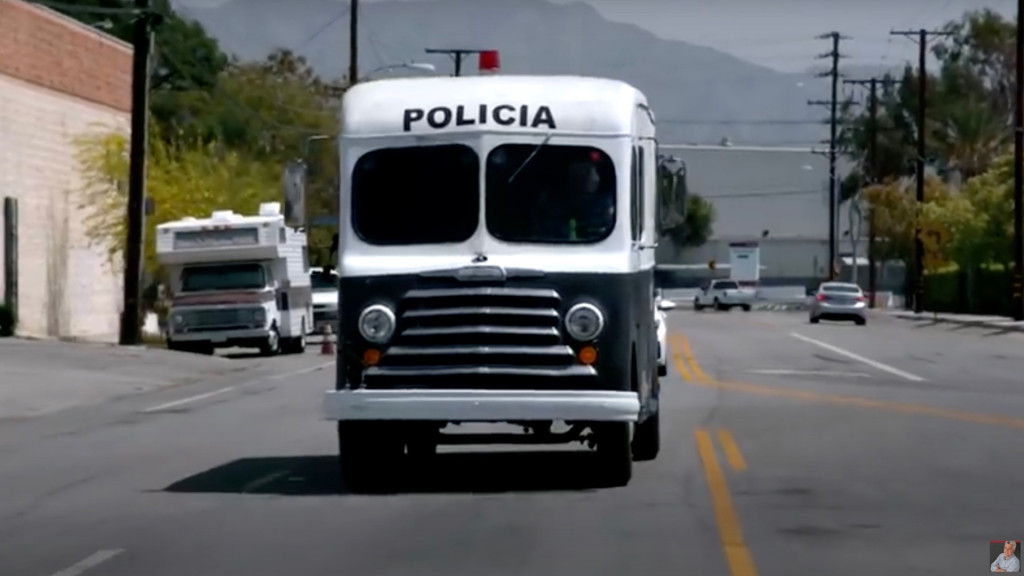There is a difference between showing your collector car at a car show versus a concours event. A standard local or regional car show is more of a get-together and if it’s judged, it’s usually done casually, with the winning car usually being a people’s choice award.
Also at local car shows, there are often awards given in so many categories that practically everyone can eventually win one. That’s not a negative, but a reality. I say this having won a few awards when all I did was drive there after quickly wiping down my car.
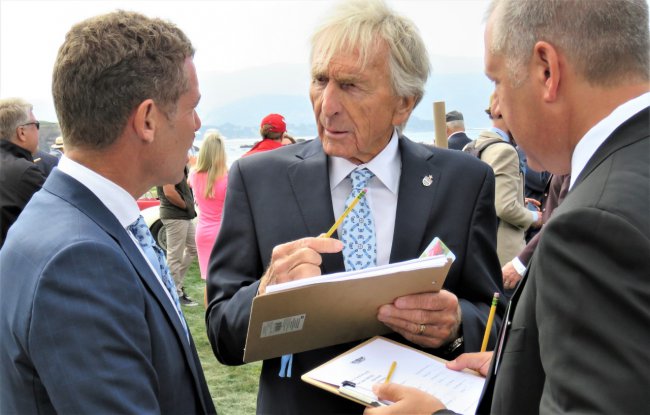
Racing legend Derek Bell judging at Pebble Beach | Bob Golfen photo
Showing and possibly winning at a top-tier concours event such as Amelia Island or Pebble Beach is a whole different story. These events invite only the finest cars for each of their classes and are judged by the top experts in the collector car world, including designers, marque experts, legendary racing drivers, and even collector car journalists.
The stakes at a concours event are a bit higher as just being invited to show your collector car at Amelia can add value to the vehicle and will be considered by many to be vetted as a top-tier example.
The first thing to understand about showing a car at a concours is if your car is accepted, that is a win in itself. Sure, you want to win but enjoy the experience because just being invited to display your vehicle is a very big deal.
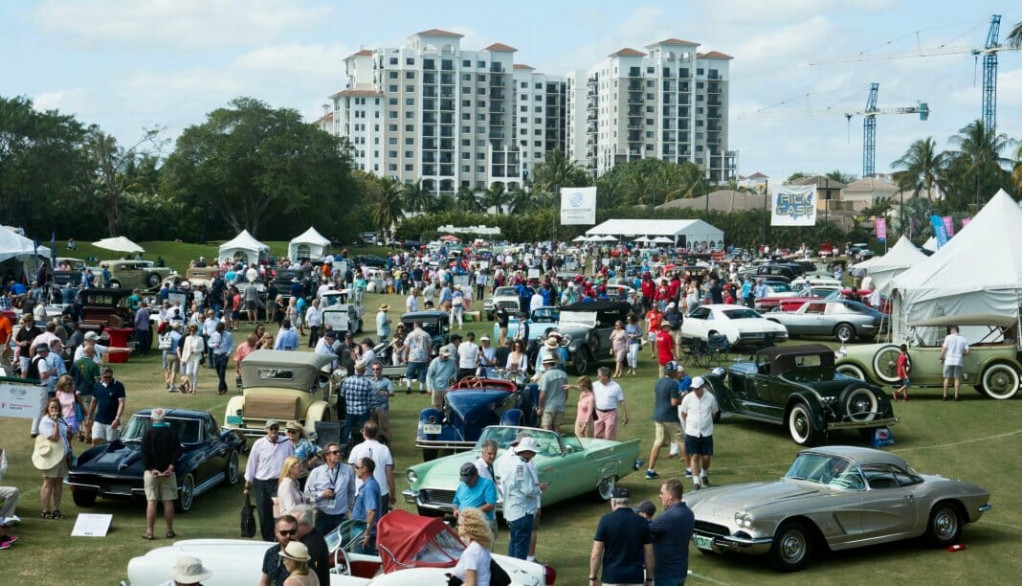
The scene at the 14th annual Boca Raton Concours d’Elegance | Boca Raton Concours photo
These events receive many hopeful entries each year. Of those that apply, more than half get turned down and not because of their car’s quality but due to the large number of excellent entries.
In the words of Chris Brewer, director of communications at Amelia:
“Every car that is on the field has already won just by being there and their car on the field is super significant.”
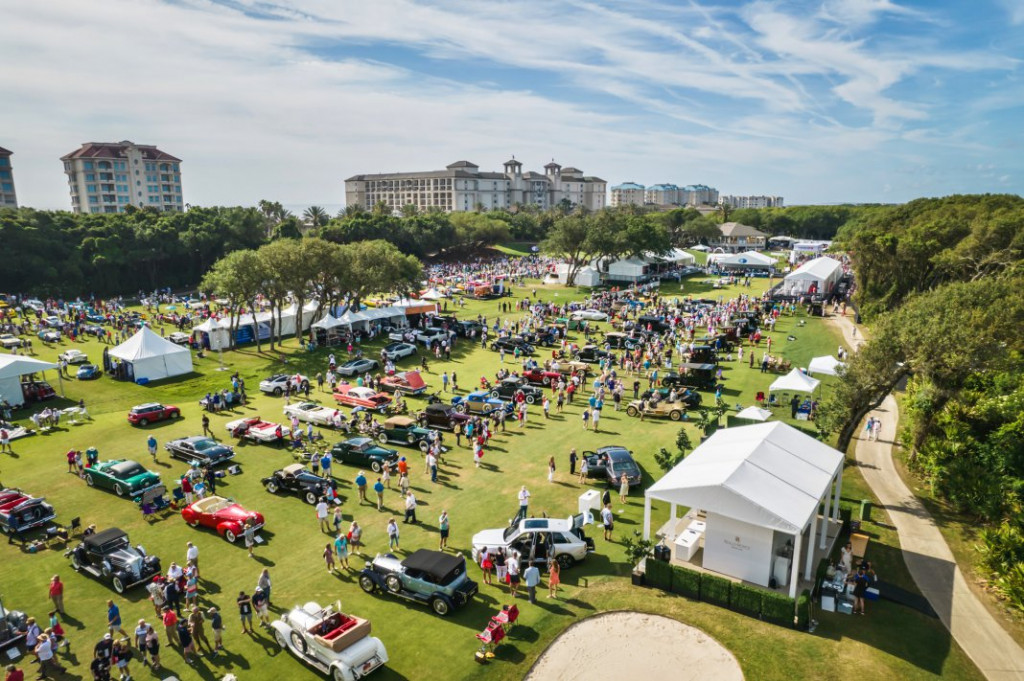
The Amelia Island Concours d’Elegance | Deremer Studios LLC photo
So, what does it take to make one car rise above the others in the eyes of a concours judge? What you think matters might not, so keep reading.
Rule 1: Do not put the hood up on your car at a concours until you are asked. Car bodies are designed with the hood down. You may be proud of your engine, but the judges want to see the car as the designer envisioned it.
At some concours events, the judges will never even look at the engine. If they do ask, open your hood to show them the engine and other under-hood components. After that, close it again.
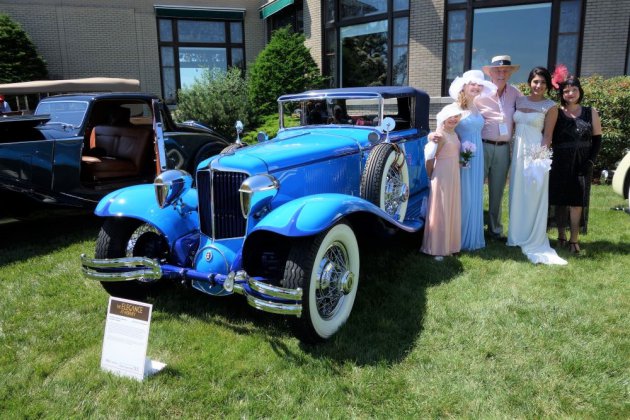
Bob Jepson with his 1929 Cord L29 | Andy Reid photo
There are usually scores of photographers shooting for national and international publications at these events and they are not likely to shoot a picture of your car with the hood up because it looks terrible, design-wise. So, if you want to see your car in a magazine or on a bunch of websites, close your hood.
Rule 2: Do not ever bring props with you to “add” to the car. If it did not come from the factory as standard equipment or as a factory accessory, leave it at home.
Rule 3: Do not bring a big sign that tells the history of your car. This looks terrible and will count against you.

Best of Show winner at the Edison Concours d’Elegance | Andy Reid photo
Rule 4: Do bring a detailed binder/book concerning the history of the car. What is most important is not the pictures of your restoration but period pictures, build sheets, order sheets and magazine articles about your specific car.
When I say your specific car, I mean stories about the exact VIN that you own, not general overviews of the model.
Leave out appraisal documents as the judges are likely to know what your car is worth more than you do, and this ultimately does not matter.
Do include any factory authenticity documents such as a Porsche Certificate of authenticity, British Heritage certificate, or other such documents.
Rule 5: Never answer a question that was not asked. If your car was damaged and rebuilt from two cars, this is not something a judge needs to be told unless asked directly. It is the judges’ job to find these flaws, and you do not need to help them.
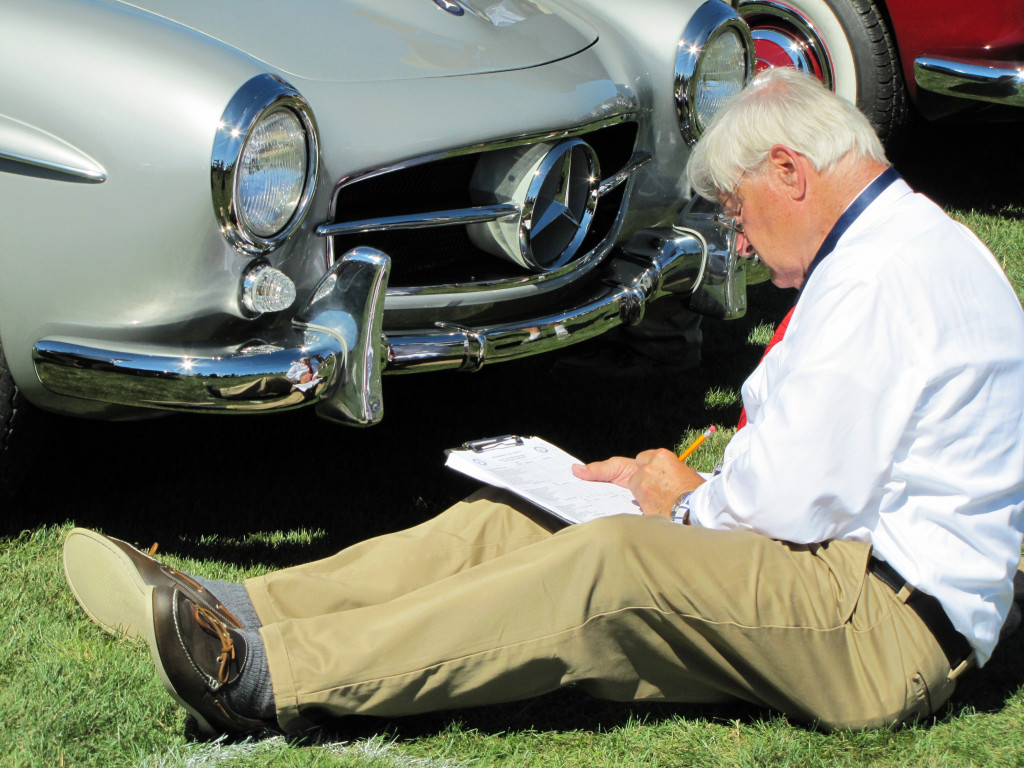
A concours Judge inspects a Mercedes-Benz 190SL | Bob Golfen photo
Rule 6: Never misrepresent your car as something it is not. Do not tell the team of judges your car was personally owned by a celebrity unless it actually was. If it was, it is your job to prove that.
Also, do not try to represent your car as a rarer model than it is. You are likely to get found out and if this happens, you are not likely to be invited again to any top-tier concours.
Rule 7: Clean your car perfectly. If your car is a preservation car being shown in a preservation class, clean the car. No concours judge that I have ever worked with is impressed by dirt, even 50-year-old dirt.
The car you bring to a concours should be as clean as possible, with every detail attended to. If you cannot do this yourself, there are a number of people who do this for a living. Invest in one of them, and you will come away amazed at how incredible these professionals can make your car look.
Rule 8: Tell the story of your car and what it means to you. Did you buy the car because it was your dream to have one since you were 13 years old? Then tell the judges that. Did you take the car on the Colorado Grand and the Mille Miglia? Tell that story. Did you restore the car yourself? Did a facility such as Mann’s Restoration or Paul Russell and Company restore the car? Do not leave that out.

Arizona Concours d’Elegance judges | Bob Golfen photo
Rule 9: Read the rules carefully. Do judged cars have to be started? Are things like lights and the horn checked? Some concours check these and others do not.
The craziest thing I have seen as a judge was while judging motorcycles at Hilton Head. I had vintage BMWs to judge and the bike that would have won had no fuel in the tank and the owner refused to start it because, he stated, it would blue the pipes.
There is no deduction for blued pipes at any concours on the planet, so this was silly. Also, the rules at Hilton Head state in the first paragraph that all bikes must demonstrate that they run in order to be judged. Again, read those rules and read them carefully.
Rule 10: Have some humility. Having your car judged is not an opportunity to brag and feel like a big shot; it is an opportunity to have your car evaluated by true experts.
In many cases, the judges have judged cars much rarer and more significant than yours, so be the person who thanks the judges for their time and effort and answers the questions asked in a polite and thoughtful manner.
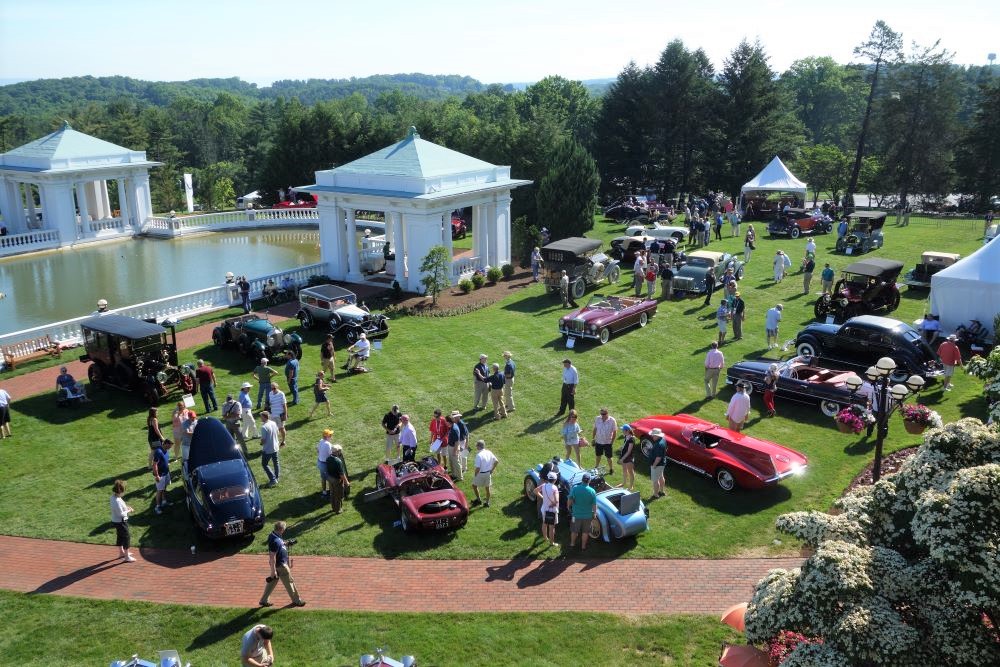
Aerial view of the Elegance at Hershey concours | Andy Reid photo
As I said at the beginning of this article, to have your car accepted and on the show field at events such as Pebble Beach, Amelia Island or Hilton Head is a win in itself.
If you follow these rules, you may end up with a class award or a second and your entire experience of showing at a concours is likely to be that much more enjoyable. If you don’t follow them, you are more than likely to come home empty-handed.
This article, written by Andy Reid, was originally published on ClassicCars.com, an editorial partner of Motor Authority.
Source










